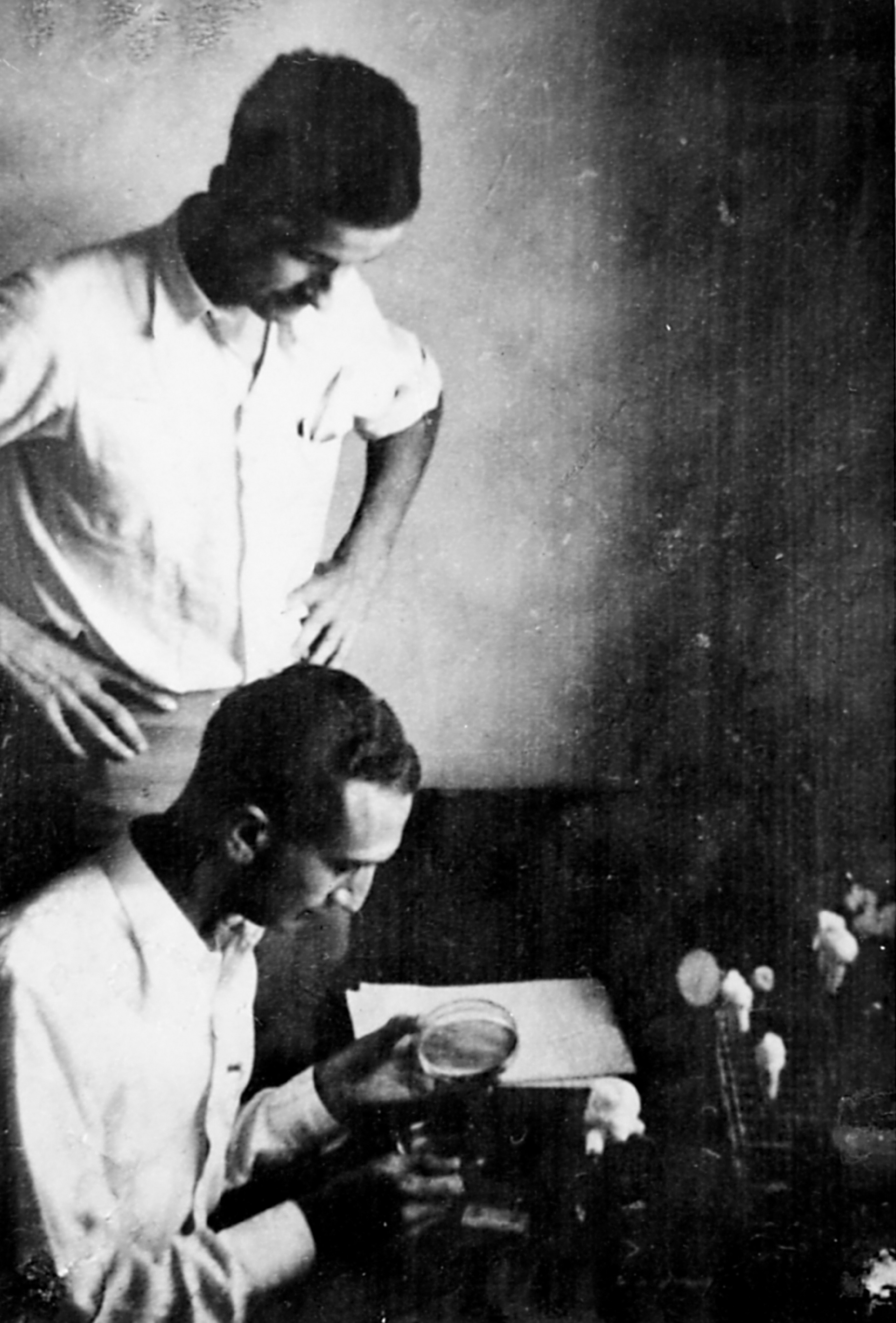Science history: Experiment shows mutations arise spontaneously, supporting pillar of Darwinian evolution — Nov. 20, 1943

Milestone: Experiment shows mutations arise spontaneously
Date: Nov. 20, 1943
Where: Indiana University in Bloomington and Vanderbilt University in Nashville, Tennessee
Who: Max Delbrück and Salvador Luria
In 1943, a physicist and a biologist published a paper that confirmed one of the central pillars of Darwin's theory of evolution.
The paper, by Max Delbrück of Vanderbilt University and Salvador Luria of Indiana University, described a simple experiment, called the "fluctuation test," that showed that mutations arose spontaneously in bacteria, rather than emerging in response to "selection pressures."
The question had been debated since Darwin published his classic "On the Origin of Species" in 1859. Darwin proposed that natural variation occurs randomly in all creatures and environmental pressures then make some of those variations better or worse for certain organisms in their "struggle for existence." Over time, those traits become more common as the fittest organisms survive and multiply. In contrast, French naturalist Jean-Baptiste Lamarck proposed in the early 1800s that variation could be induced by environmental pressures.
When Delbrück and Luria did their experiments, Darwin's theory was thought to be correct for plants and animals, but some scientists believed that interactions between bacteriophages — viruses that attack bacteria — and their bacterial hosts could somehow induce bacterial resistance to the phages.
Delbrück came into the field by accident. The disaffected physicist had emigrated to the U.S. from Germany due to the hostility of the Nazi regime and became interested in the idea of modeling genetics using ideas derived from quantum mechanics and atomic theory.
While researchering in California, he met a researcher who was studying a newly characterized bacterium called Escherichia coli, which had been cultured from Los Angeles sewage. The researcher had identified a phage that preyed on the E. coli. Delbrück was blown away by how easy it was to identify and count individual phage particles under a microscope.
"You could put them on a plate with a lawn of bacteria, and the next morning every virus particle would have eaten a macroscopic 1 mm [0.04 inch] hole in the lawn," Delbrück recounted in an oral history taken in the 1970s. "This seemed to me just beyond my wildest dreams of doing simple experiments on something like atoms in biology."
Get the world’s most fascinating discoveries delivered straight to your inbox.

In December 1940, at Cold Spring Harbor Laboratory in New York, Delbrück met Luria, an Italian-Jewish doctor. Like Delbrück, Luria had fled the Nazis, and like Delbrück, he had been bored with his chosen specialty.
Luria had seen some early work on phages and had also become enamored with the idea of using phages to investigate genes as if they were a collection of atoms. At the time, people understood the idea of genes but had little understanding of what they were made of.
About nine months after they met, the duo decided to test whether phages could induce resistance in E. coli. They were stuck on how to proceed, until Luria chatted with a colleague who was playing the slots. He realized statistics could be used to distinguish between random mutations and ones induced by the phages — in other words, to determine the direction of the cause and effect.
They filled a bunch of tubes with E. coli and then exposed the bacteria to phages and serially cultured them on plates. If mutations were acquired, they reasoned, all of the plates would develop E. coli with resistance mutations at roughly the same proportions, and only after the phage was introduced to the plates. By contrast, if mutations arose randomly, there would be more variation in the number of resistant bacteria between cultures; some would be "jackpot plates" with many more resistant E. coli because they happened to evolve resistance genes early in culture growth, as opposed to later on.
This became known as the "fluctuation test," and the duo published their findings confirming that mutations arise randomly in bacteria in 1943.
That same year, they began collaborating with Alfred Hershey, a microbial chemist then at Washington University in St. Louis. The trio would go on to show that phages contained more than one gene and that the viruses could swap genetic information with each other within the same bacteria, known as genetic recombination. Later, Hershey and collaborator Martha Chase showed that DNA was the carrier of that genetic information. Hershey, Luria and Delbrück would earn the 1969 Nobel Prize in physiology or medicine for their contributions to genetics.
Interestingly, while their work cemented the Darwinian hypothesis that natural selection acts upon random variation, some newer research suggests that not all mutations are completely random. Mutation rates in "essential genes" occur at lower rates than in more incidental ones, at least in certain plants. And recent research suggests that if the team had chosen a different bacterium and phage system to study — such as one that used the bacterial immune system CRISPR to fight off phages — the statistical results would not have been so clear-cut.

Tia is the managing editor and was previously a senior writer for Live Science. Her work has appeared in Scientific American, Wired.com and other outlets. She holds a master's degree in bioengineering from the University of Washington, a graduate certificate in science writing from UC Santa Cruz and a bachelor's degree in mechanical engineering from the University of Texas at Austin. Tia was part of a team at the Milwaukee Journal Sentinel that published the Empty Cradles series on preterm births, which won multiple awards, including the 2012 Casey Medal for Meritorious Journalism.
You must confirm your public display name before commenting
Please logout and then login again, you will then be prompted to enter your display name.
